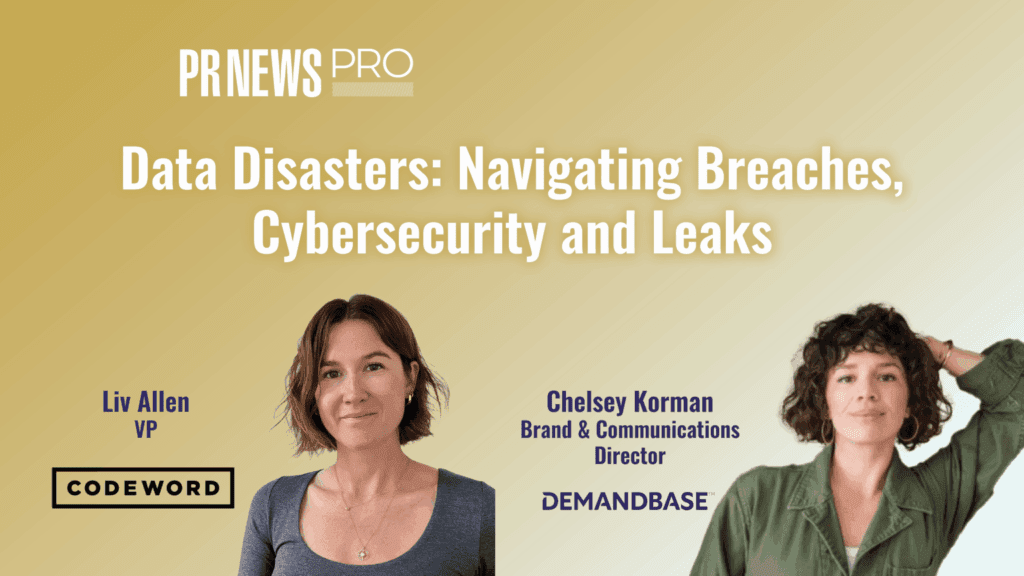Between opt-outs and email address changes, any brand’s email list can shrink at the rate of 30% to 35% annually—most of it certainly because of the latter, rather than the former. Thus, it’s imperative that marketers always have acquisition tactics in the field to maintain and to grow their lists.
There are lots of email address acquisition methods, but their usefulness for any given marketer depends on the brand. Some may be appropriate, others not. But what they all share is an attempt to establish or reinforce relevancy in the moment to incite a permission opt-in.
Registration
Many of the tactics marketers find most effective will involve some sort of Web-based signup process—for example, registration for downloads, online event signups, registration during purchase, access to coupons. In general, Web signup forms need to be easily accessible from everywhere in the site that makes sense. Wherever the value proposition is presented; they should be quick to complete, and there should be some sort of incentive for the subscriber to complete the process. Hence, a value exchange.
And most certainly, whenever data is collected, there should be a transparent privacy policy readily accessible, and preferably a link to a preference center where the individual can specify his or her choices. Preference centers help marketers engage with contacts on their terms in frequency, channel and content. This in turn makes customer communications more effective, more welcomed and better positioned to set expectations and engender loyalty.
Newsletter Subscriptions
If a brand has something relevant and useful to say to subscribers on a regular basis, a newsletter can be a great tool to help build your email file and build relationships. Just make sure that there’s a commitment from the brand to the program. If subscribers expect a monthly newsletter, then the newsletter project must be a consistent part of a standard monthly marketing calendar. Provide access to a sample in advance so the potential subscriber can inspect its content and assess it relevancy.
Content
If a brand has valuable content such as white papers or coupons that its Web visitors would want, send them the download link in an email. They get the white paper or coupon and the brands get a new subscriber/follower! This is definitely a top tactic found effective by B-to-B marketers, where the “chief content officer” is a hot new position in many companies.
Online Account Setup
For an online account setup or an online purchase process, marketers already have a Web form in place. Why not augment it with an option for potential subscribers to join a promotional email list—daily deals, weekly closeouts, monthly private sales? All that’s required is a simple check box. A lot of online retailers do this today and find it highly effective.
Additionally, when customers and prospects sign up for any kind of online event or contest, it’s a certain sign they likely are very excited about your company and brand. Take advantage of their enthusiasm and get them to subscribe to the brand’s email list.
Social Media
People listen to their friends; they trust their opinions and recommendations when it comes to companies and organizations, and their products and services. Get an email program working harder by encouraging subscribers to share information about the brand. These postings are then seen by their friends who may very well navigate to the company’s social media page—where an opt-in then can take place via a social media app, or in the case of Facebook, on a page tab. Take advantage of social media influence and provide an easy way for these interested friends and followers to subscribe to branded emails.
Social applications are another great way to get subscribers. Some applications offer the promise of a coupon in the end, others may simply be fun, and still others may go truly viral. Either way, applications provide a great opportunity to introduce a branded message, engage and re-engage someone, and convince them to opt-in to regular and promotional email communications.
Don’t forget other opportunities such as tweeting or blogging. Whenever a marketer posts thought leadership content, try to include an email opt-in link. This is an especially great way for B-to-B companies to build subscribers for an email newsletter. When blogging about a topic that is clearly relevant to the reader, they’re likely to engage with the company by subscribing to its email list. This call to action too often is missing at the very point of relevancy presented in the blog.
Mobile
Marketers also can (and should) acquire email subscribers through mobile programs. Today, mobile is a constant companion for most consumers and business individuals. By having a mobile platform that is accessible and useful to smart phone users, relevance already is established. If a brand has a mobile version of its website, make sure it includes a simple email sign-up form.
Campaigns can also include a link to a mobile landing page where customers can submit their email address and opt-in.
Marketers could also provide easy sign up instructions via email from a mobile phone, like “send a blank email to subscribe@mycompany.com.”
For any of these mobile tactics, announce instructions in all brand communications that make sense – billboards, print ads, web sites, package inserts, statement stuffers, transaction and service emails, etc. In-store signage in particular is a great place to advertise an email program – most customers will be carrying a cell phone when they come in to shop, and the very fact that they are in-store “qualifies” them as having interest in the brand.
Offline Point of Sale
Offline channels work well as email list growth tools, beginning with point of sale. Some POS systems support this, others won’t. In addition, asking for an email address at the point of sale may or may not be the right action for every brand. In general, if the customer can key the address himself or herself, as opposed to a sales representative at the register, it will likely be more accurate. As an alternative, think about a post card at the register or a URL for opting-in printed on the receipt—it gives the customer the option to complete it later. Many retailers now include a laptop or some type of kiosk where the customer can key it in themselves (ask for the email address twice to help ensure there are no misspellings). No matter which methods are used, train floor staff on the value of the email signup and provide them a short but effective script to use each time.
Live Events
Another in-person opportunity for email collection is live events. If people are at your event, they’re likely already are excited about the product or service and likely would be excited to hear from the brand regularly via email. Have a stack of post cards that the attendees can either complete on site at the event or take with them to complete later.
Direct Mail
Direct mail pieces can double as an email acquisition tactic. For example, if the direct mail piece is a coupon, then the marketer can provide a URL for email signup to receive future coupons electronically (even providing a barcode or QR code to the mobile device that can be placed under a scanner at POS). Or when introducing a new product or service, encourage email signup alongside the product announcement and in public relations materials that support it.
Call Center Interactions
Customer service channels also provide a high level of engagement that can lead to willingness to provide the email opt-in. Call center staff could offer to enroll incoming customers in an email program or even just direct them to the Web for signup. This group can use a script very much like the one created for in-store staff.
Product and Warranty Registration
Finally, don’t forget about product and warranty registration – whether it’s for a software package, an appliance, or a new home electronics purchase. A lot of companies already direct purchasers to a product registration process on the web. Just augment that process with a check box option to subscribe to the brand’s email program for both promotional and service-related announcements.
Remember that email remains a top-performing marketing channel. But because of a high churn rate, a marketer must always have acquisition tactics running in order to maintain and to grow the list. Those tactics need to be pervasive, and built upon moments of value and moments of relevancy. Permission only happens and is only retained when relevant information and value are part of the communication.
And don’t forget that if a brand acquires an email address, it must be prepared to use it right away (beyond an email message confirming the registration). To keep a subscriber, messaging needs to be relevant and frequency needs to be at an expected rate. But even this will not completely stop churn. Subscriber’s interest may change over time causing them to opt out. (Maybe a parent is subscribed to an infant/toddler-focused company, but loses interest as their child starts school.) Also, people simply change email addresses but don’t tell that fact readily to the marketplace.
Without ongoing list growth tactics and great follow-up, your email marketing program will gradually disappear.
Liz Bross ( liz_bross@harte-hanks.com) is vice president of digital interaction for The Agency Inside Harte-Hanks.
 Network
Network

